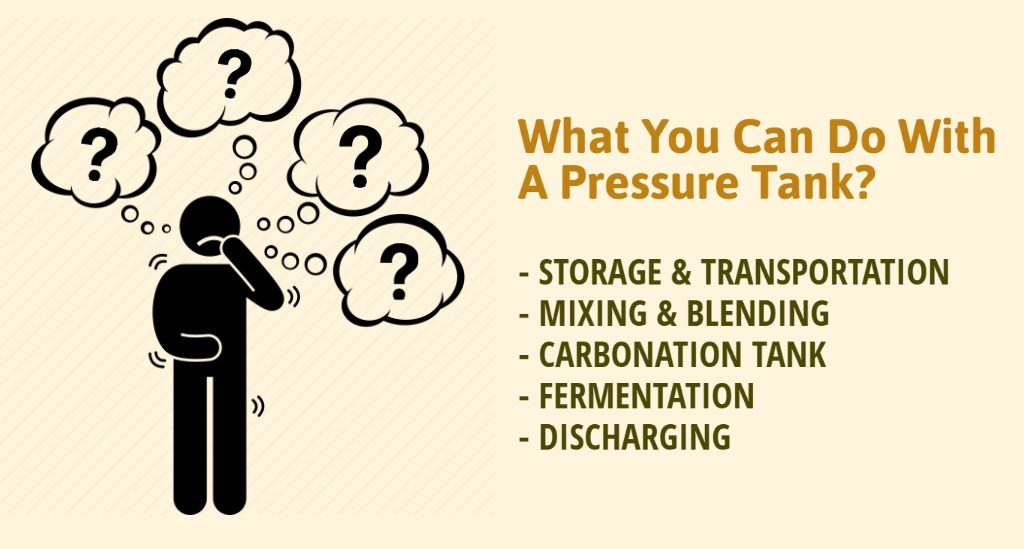
What You Can Do With A Pressure Tank?
A pressure tank is a tank that is built to withstand the pressures created when using compressed air and/or other gasses. Perhaps the most common type of pressure container is simply food & beverage containers that you find at the store. For example, a can of soup or a soda can is built to withstand the pressure needed to keep the product fresh.
Another common example of pressure tanks are beer kegs and/or soda canisters. These are used at almost every bar and restaurant to pour beverages. These tanks use slightly amounts of pressure to discharge the of that tank, which is then expelled at the beer tap or soda spout.
In large scale food/beverage production, pressure tanks can be found doing many tasks and become much larger ins scale. Here are a few other functions that pressure tanks might be used for…
1- STORAGE & TRANSPORTATION: As mentioned above, a standard can of food or canned beverage is a type of pressure container. This is on a small, consumer level scale, but on a large scale, this becomes an efficient way to store ingredients and other products that my spoil. Fruits and Vegetables of course are produced during certain seasons. In order to have these goods available for use all year round, many food/beverage processors will store & transport these products in a pressure tank, like a large can of food. The pressure allows the to offset the oxygen with a different type of gas, preventing spoilage of whatever the contents maybe.
2- MIXING & BLENDING: Due to their cylindrical shape, which is necessary to withstand large amounts of pressure, pressure tanks become perfect mixing vessels. By inserting an agitator of some sort, these tanks are ideal for ingredient emulsification, which can of course be immediately stored in the same container.
3- CARBONATION TANK: A pressure tank allows you to charge the contents with CO₂, which is needed to produce carbonated beverages. A producer could simply force carbonate the contents using nothing more than the container, a gas fitting and CO₂. Another option would be to insert a sparging stone, which helps the CO₂ absorb into the liquid more efficiently.
4- FERMENTATION: ‘Fermentation occurs in the absence of oxygen (anaerobic conditions), and in the presence of beneficial microorganisms (yeasts, molds, and bacteria) that obtain their energy through fermentation.’ In order for fermentation to occur, one simply needs a closed container, which makes a pressure container perfect! Because you can quickly & easily offset oxygen, a producer can speed up the fermentation process.
5- DISCHARGING: Discharging and emptying a pressure container is not only easy, but also efficient! By simply charging the container with a small amount of pressure and opening a valve, the containers will be forced out and replaced with the air, working similarly to a vacuum. This allows these containers to be used as serving vessels like a beer keg, or as a topping tanking to fill/top-off other containers. In addition, by using pressure to empty a tank, a producer can efficiently empty the tank to its entirety. Without that pressure, the liquid/viscous contents will of course stick to the insides of the container, not fully discharging.
These are only a handful of examples of ways to use a pressure tank. In addition to these items listed, a pressure tank can be used in a number of specialty ways. When all is said and done, it’s not a bad idea to have a pressure tank in your production facility for the occasions when one can come in handy.
Contact CSC
 All Major Credit Cards Now Being Accepted. Charges may incur.
All Major Credit Cards Now Being Accepted. Charges may incur.